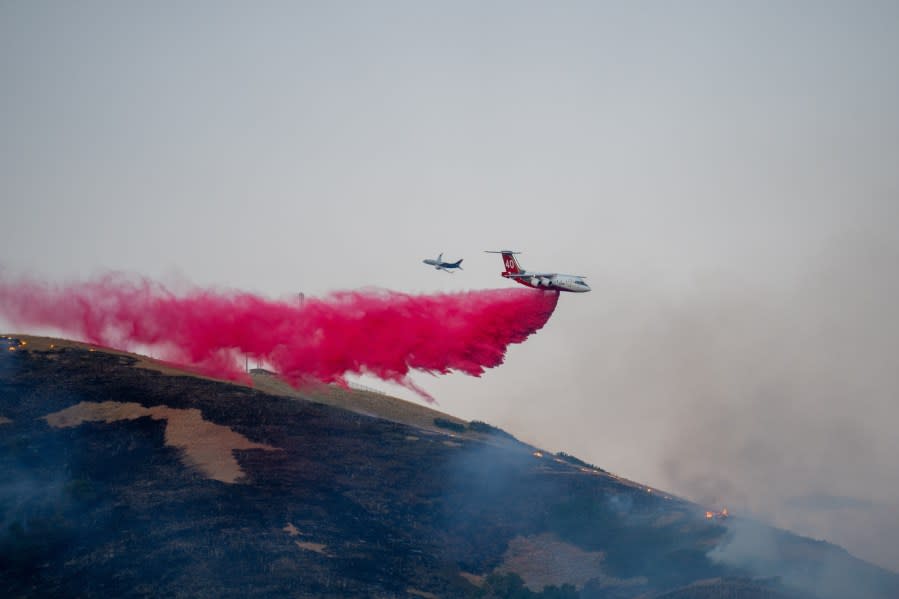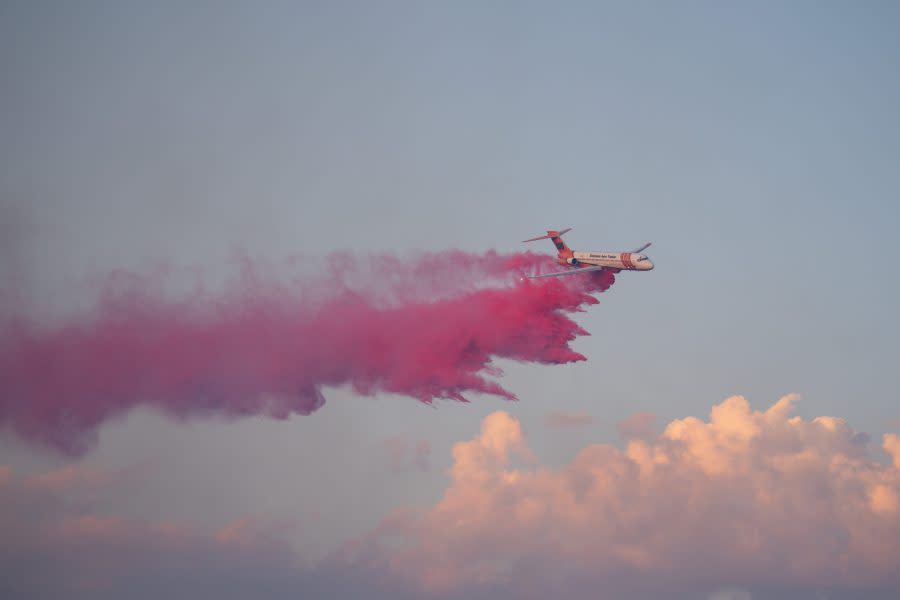What is that red smoke fire fighters drop on wildfires?

SALT LAKE CITY (ABC4) — Salt Lakers watched as firefighters battled the Sandhurst Fire as it burned over 200 acres near Ensign Peak just above the Utah State Capitol over the weekend.
Among their efforts, low-flying planes could be seen dropping what appeared to be red smoke onto the mountainside. So what exactly is that red smoke that firefighters are dropping onto the flames?


According to the National Forest Service, the red smoke is a mix of fire retardant chemicals used to safely contain wildfire flames. The exact chemical makeup of the fire retardant varies, but the National Forest Service said it contains about 85% water, 10% fertilizer, and 5% minor ingredients containing colorant, thickener, and stabilizers.
“Aerially applied fire retardant is used to slow the rate of spread by cooling and coating fuels, depleting the fire of oxygen, and slowing the rate of fuel combustion as the retardant’s inorganic salts change how the fuels burn,” the Forest Service wrote in a January 2024 report.
Evacuation orders lifted for areas near Sandhurst Fire
So what’s with the ultra-bright red coloring? The Green Science Policy Institute explains the color comes from added dyes that make it easier for firefighters to keep track of what areas have been treated.
With the help of aerial fire retardants, on-the-ground firefighters can then access fire areas safely and begin construction of containment lines.
This method of suppression has been used by firefighters since the 1950s. Over the decades the formula has changed to be more effective, more environmentally friendly, and safer for humans and wildlife. But that’s not to say the fire retardant chemicals are unsafe.
The National Forest Service says all fire retardants it uses fall under the Environmental Protection Agency’s “practically non-toxic” category for humans and wildlife. Of course, using the aerial fire retardant doesn’t come without its side effects.
In an educational video posted by the National Interagency Fire Center in 2014, the fire retardant can decrease the intensity of the flames but it also produces a lot more smoke.
“That’s one of the by-products,” explained Shirley Zylstra, Wildlands Fire Chemicals Program Leader, in the video. “Part of what we’re seeing in that smoke is some of the residual steam from the fuel moisture. All fuel will retain a little bit of moisture as it’s burning.”
In 2023, the National Forest Service reportedly used over 340,000 gallons of aerial fire retardant on its Intermountain Region lands – which includes national forests in Utah, Nevada, and parts of Wyoming and Idaho.
Copyright 2024 Nexstar Media, Inc. All rights reserved. This material may not be published, broadcast, rewritten, or redistributed.
For the latest news, weather, sports, and streaming video, head to ABC4 Utah.

